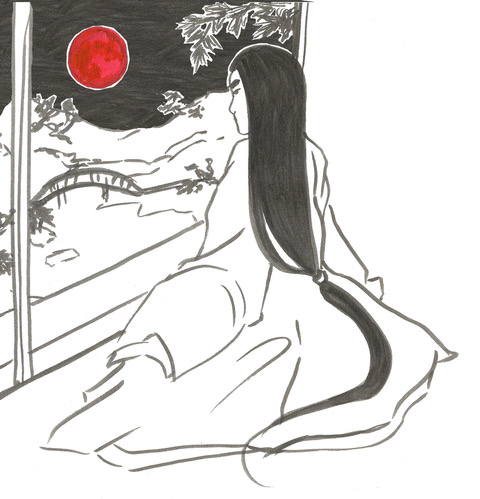Time at the Court
 © Alexandra Ciorciaro 2019
© Alexandra Ciorciaro 2019
This research project investigates temporal regimes and variances of time at the medieval Japanese court. The court had emerged as a primary sphere of vernacular literature in the Heian period (794-1185) and witnessed drastic changes with the dawn of the medieval period as political power shifted to the warrior class. With the establishment of the shogunate, the so-called bakufu , Japanese society gradually changed into a feudal and patrilocal system. The investigation into symbolic representation and social regulations of time in this period of drastic change helps to understand the interrelation between power structures and time symbolizations at the medieval court.
The main focus is on the time perception of emperors, courtiers and court ladies, and its relation to social activities and natural rhythms. This includes, for example, an investigation into time related aspects of annual and daily observances, practices of time announcement, as well as biological, social, and cognitive expressions of time in the aristocracy’s literary output. I notably probe into domain-specific modalities of time, such as: which actions and events had to be timely coordinated? Why and in what context was it important to discuss certain aspects of time? Moreover, the project examines to what extent earlier practices of chronography and expressions of time consciousness at court persisted into the medieval period and how these expressions evolved over time. In medieval Japan, the court continued to be a locus of hidden and conspicuous excesses in strongly gendered exchanges, as well as an exemplary space of protracted experiences of time. Expressions of melancholia and nostalgia stand notably prominent in female court literature. There is, however, a tendency over time to give more room to record economic and legal matters. This gives witness to a shift of the dominance of symbolic forms in the lives of courtiers in the Kamakura period (1185-1333) from “art” to “economics” and “law.”
Abstract book project Frozen Time, Fleeting Time. Tracing Temporalities at the Medieval Japanese Court
Frozen Time, Fleeting Time. Tracing Temporalities at the Medieval Japanese Court is the first monograph written in English to provide a comprehensive analysis of the multifaceted aspects of “time” at the Japanese court. It makes a substantial intellectual contribution to the scholarly field of medieval Japanese history, culture, and literature, and will also have a profound impact on established approaches to premodern Japan. Focusing on the textual, social, and cognitive dimensions of time, and drawing on a wide array of medieval sources and theories of time by both Western and Japanese scholars, I argue in my book that a conglomeration of time orders and logics coexisted, interacted and sometimes clashed at the medieval Japanese court. By demonstrating the relevance of various time-related practices in medieval Japan to modern Japanese and Western societies, my book challenges culturalist views of premodern, notably Asian, societies, as being dominated by a uniform understanding of time as cyclical.
The work contributes to the disciplinary conversation of, socio-cultural and intellectual history, as well as literary studies, and is intended for specialists in Japanese studies, particularly those in the fields of medieval Japan. It will also be of interest to general readers interested in premodern Japan, notably its history and literature. Readers will leave this book with a deeper understanding of the complexities of time at the medieval Japanese court.


